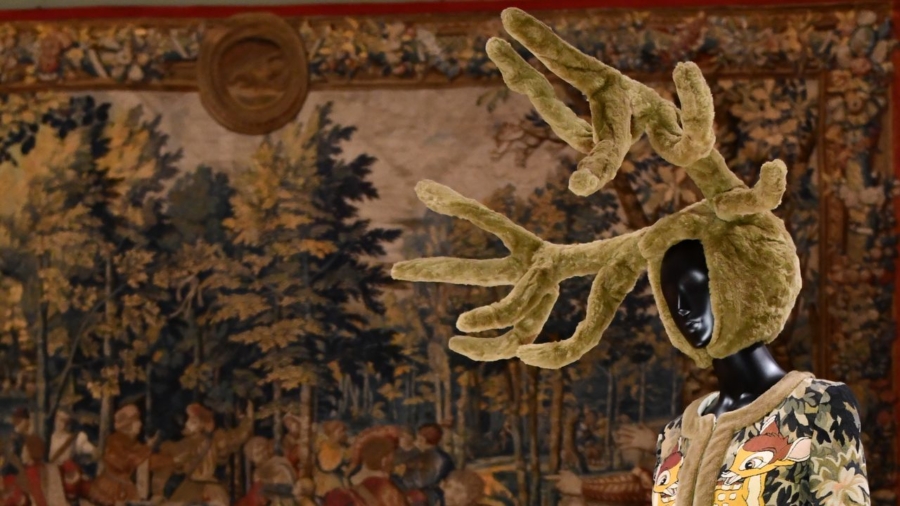How did you define your approach to “Louvre Couture”?
It was very precise. The Louvre doesn’t have fashion collections and never will, those collections belong to other institutions like the MAD (Museum of Decorative Arts) next door and the Galliera. But we do have 32,000 art objects, among them 300 works left to the Louvre by Madame Carven, pieces that belonged to Jacques Doucet and a beautiful diamond box that belonged to Yves Saint Laurent.
When you look at that, and the birth of haute couture, and how collecting allowed all these designers to consolidate their social status, there are deep cultural, societal, sociological reasons for us to do this. So our question was: how did designers look at the works in the Louvre, draw inspiration from them, reinterpret them? When you take a step back, fashion is everywhere you look—in Antiquity, in Babylon, in Athens, in Venetian painting and French sculpture, absolutely everywhere.
Could you highlight a few examples for those who aren’t in Paris right now?
The idea was really to follow the chronological order of the collections by blocks, from Byzantine to the Middle Ages, the Renaissance, the 17th and 18th centuries, the Empire, the Second Empire, etc. That way, we could show that, in his final couture collection, Karl Lagerfeld was inspired by an 18th-century blue and white lacquered commode. Sometimes, the interpretations are freer, as with Versace, but you can see that designers are interested in moments in the history of objects. More broadly, it’s interesting to observe how the decorative arts influence them personally: we all know the photos of the interior decor in Lagerfeld’s, Dior’s and Saint Laurent’s homes; with young talents like Blazy or Pieter Mulier, design and photography is always very present.
Source link


.JPG)









